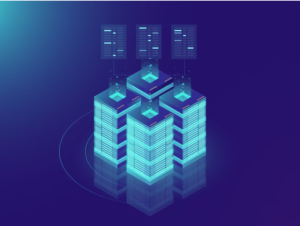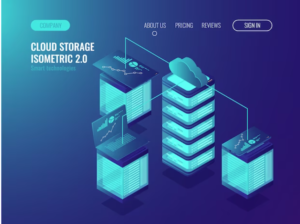When it comes to the complex and highly regulated field of telecommunications, virtual data rooms as a game changer for telecom regulatory compliance, have emerged as a game-changer. In this article, we’ll discuss how virtual data rooms (VDRs) are changing the face of telecom regulatory compliance and why that matters. Click here

Realizing the Importance of VDRs in Telecommunications
Compliance with telecom regulations calls for cautious management of private data, rigorous adherence to procedures, and open communication. In this regard, virtual data rooms (VDRs) have proven valuable tools.
These secure web platforms allow telecom businesses to store, distribute, and manage regulatory-compliant documents.
Virtual data rooms aid telecom compliance.
For compliance audits, virtual data rooms (VDRs) offer improved encryption and access limitations to store and transfer information securely.
Audits are usually required for regulatory compliance. Virtual data rooms organize records for transparent regulatory audits.
Virtual data rooms (VDRs) help telecom teams comply by enabling real-time collaboration.
Enhanced Transparency: Lawfulness requires transparency. Due to their extensive access records and audit trails, virtual data rooms provide document openness.
Telecom employees can create their own compliance document permissions.
Regular Compliance Audits: Use the VDR to conduct internal audits to identify and resolve compliance concerns before an external audit.
Virtual Data Rooms are utilized for more than storage. They are essential for telecom corporations navigating complex regulatory compliance. By securely and transparently managing critical documents, VDRs are game-changers in telecoms regulatory compliance.
The Impact of Virtual Data Rooms on Telecom Regulatory Compliance
Regulatory compliance is a critical pillar in the complex telecommunications industry, helping to shape operations and ensure adherence to rigorous rules. Virtual data rooms (VDRs) have been a game-changer in the telecom industry by rising to the challenge of regulatory compliance.

Telecom Regulatory Compliance and the Role of Virtual Data Rooms
Data security, openness, and observance of telecom-specific requirements are crucial to achieving regulatory compliance. Safe havens and VDRs provide a protected, consolidated location to store, share, and manage confidential materials about regulatory compliance.
Virtual data rooms provide several benefits for ensuring compliance with telecom regulations.
VDRs use cutting-edge security measures such as robust encryption and access restrictions to protect the privacy and authenticity of crucial compliance documents.
They are facilitating Audits and Regulatory Inspections Through Organized Documents. These systems consolidate documents linked to compliance, making audits more straightforward and ensuring accessibility during regulatory inspections.
VDRs simplify government audits and inspections by making prior data and audit trails accessible.
Centralized systems allow quick updates, providing everyone the latest information they need to keep in line.
Entry permissions can be adjusted to suit regulations, and only specific persons can read particular papers.
Regular Compliance Audits: Utilize the tracking and audit functions of VDRs to monitor compliance adherence and maintain continual alignment.
Conclusion
The advent of virtual data rooms has profoundly influenced the telecom industry’s approach to managing regulatory compliance. By improving data security, streamlining audits, and increasing openness, they are revolutionizing the field of telecom regulatory compliance.
FAQs:
1. What is the purpose of a virtual data room?
Answer: The goal of a virtual data room is to provide a safe online area for storing, exchanging, and managing sensitive information, promoting efficient collaboration and document management, especially critical in sectors like telecom for regulatory compliance.
2. What should be in a data room for due diligence?
Compliance records, financial statements, legal agreements, and operational details should all be stored in a data center dedicated to telecom due diligence. Participants in the due diligence process can gain knowledge from these materials.
3. What is the complete form of VDR in telecom?
Answer: A VDR, or virtual data room, is a safe online space where sensitive documents, such as those needed for regulatory compliance, may be stored, shared, and managed audibly.
4. How secure are virtual data rooms?
As a result of their superior encryption, access restrictions, and audit trails, virtual data rooms are an ideal option for regulatory compliance in the telecommunications industry.
5. What are the benefits of a data room?
The answer is that a data room may help with regulatory compliance in the telecom business by providing a more secure and simplified document management method, real-time collaboration, and transparency.
6. What are the benefits of the virtual database?
Answer: A virtual database, like a virtual data room, has advantages, including streamlined data administration, centralized storage, and ease of access. These advantages lead to simplified operations, boosting regulatory compliance efforts in telecom.
7. What are the 4 P’s of due diligence?
People, Processes, Products, and Profits are the 4 P’s of due diligence. To guarantee full investigation and compliance, it is necessary to evaluate these factors, making virtual data rooms an essential tool for managing the complex due diligence process.
8. How do you set permissions in virtual data rooms?
Access levels for users are defined when permissions are set in virtual data rooms. Administrators have complete control over who has access to what documents and how they may be used to maintain regulatory compliance.
9. How do you make a virtual data room?
Choosing a reputable service, uploading necessary documents, and setting up appropriate permissions are the three main steps in setting up a virtual data room. Usually, the supplier will give simple-to-use APIs for setting up and administering VDRs.
10. What is the difference between LDR and VDR?
LDR and VDR stand for “long-distance relationship” or “virtual data room,” respectively. While LDR is concerned with interpersonal connections, VDRs are essential for the safe management of documents in the context of telecom regulatory compliance.
11. What are the VDR system’s different components?
The answer is that VDRs can have many different features, such as managing documents, users, audit trails, and reports. These features help the telecom industry meet regulatory requirements and improve document management.
12. What is DDN in telecom?
A “Data Delivery Network,” or “DDN” for short, is a type of network architecture created specifically to transport data quickly and reliably between endpoints. Telecom operations and efforts to comply with regulations will benefit from this infrastructure.

